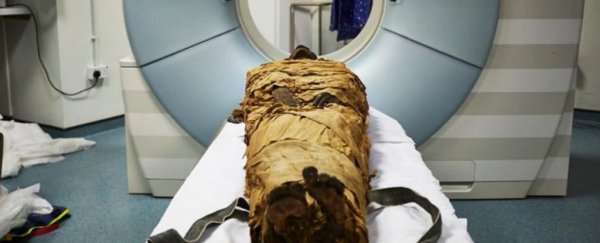If the dead could talk, they'd probably have a lot to say. Still, it's pretty darn tough when you can only make one sound and you've lost your tongue.
Under these unforgiving conditions, the 3,000-year-old Egyptian mummy Nesyamun should be forgiven for merely grumbling out an "eeeeyhh".
After several millennia of not making a peep, that was the sound scientists heard when they 3D printed the mummy's vocal tract - an elongated groan somewhere between the vowels of bed and bad.
"He certainly can't speak at the moment," David Howard, a speech scientist at the University of London, admitted to The New York Times.
"But I think it's perfectly plausible to suggest that one day it will be possible to produce words that are as close as we can make them to what he would have sounded like."
Howard's done this sort of thing before, but only on the vocal tracts of living people. In his experience, however, he says this one vowel sound is very realistic. Going from that to speech is obviously a huge step, but the process has at least been kickstarted.
In 2016, using a CT scanner, scientists were able to recreate the voice of Ötzi the Iceman mummy, and his vowel sounds are much more gravelly than Nesyamun's.

This time, researchers used a similar method to recreate Nesyamun's vocal tract, all the way from the mummy's lips to the larynx. Connecting a loudspeaker to a computer, the team made a sort of artificial larynx, using the computer to generate a sound for the vocal tract.
This single vowel result isn't enough to synthesise running speech, the authors explain in their paper; to do that, they would need more knowledge of the specific vocal tract articulations, and the phonetics and timing of this ancient priest's language.
Perhaps a tongue could help, too. While the mummy's vocal tract was in remarkable condition after several millennia, the bulk of this particular muscle was missing.
"Give him a tongue that's reasonable then we could move the whole of the vocal tract around using knowledge of speech production," Howard told CNN.
"It's feasible, although we can't do it easily at the moment."
In ancient Egyptian culture, it was believed that 'to speak the name of the dead is to make them live again'. The outside of the mummy's coffin reads "Nesyamun, true of voice." Maybe one day, his smooth voice can read that inscription out loud.
The study was published in Scientific Reports.
